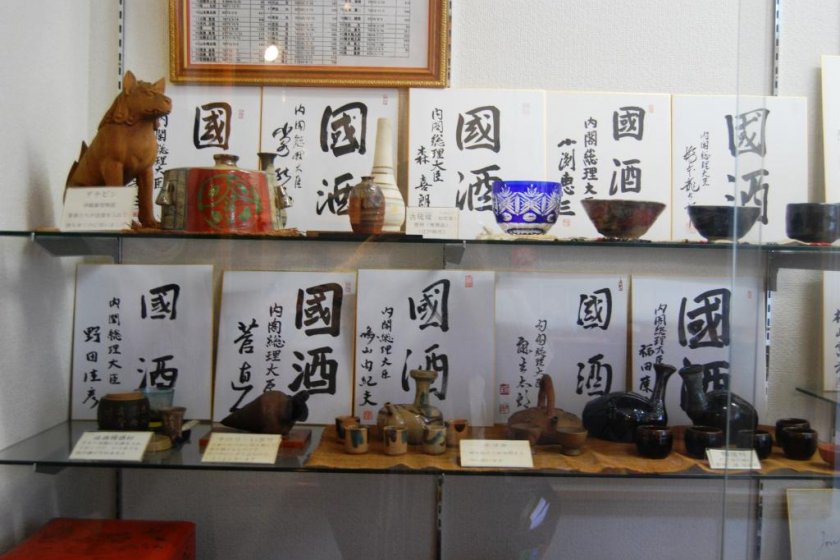Do you want to know what sake Japan's Prime Ministers drink? Check this out!
Watarai Honten sake brewery is located in Oyama Town, in Tsuruoka City. In Japan’s Edo Period (1603 to 1868) there were no less than 42 breweries in this small town but now there are only a few remaining. One of them is Watarai Honten brewery.
All former Prime Minister in recent history signed off the Dewa-no-yuki sake as “national drink” and they left their signatures as a testimonial. Sake is a national drink in Japan indeed but the recognition by that many a Prime Minister surely means that the brew served up here is in the top league.
As you can expect from a brewery with a 380 year tradition, it is housed in a traditional building and there is a traditional atmosphere.
The brewery is found nearby a river to ensure a constant supply of fresh water. The rice is sourced from the fertile Shonai Plains stretching out from the Sea of Japan to the Dewa Sanzan mountains.
For a good overview of rice production in this area, you may want to visit the Sankyo Rice Warehouses in Sakata City, which is a short train ride away from Tsuruoka City.
The sake brewery’s toshi, or brewmaster in Japanese, is the 17th brewmaster and his son, who is currently training, will be the 18th brewmaster. Imagine the skills and knowledge passed down from one generation to the next of such a long history in the sake brewing business.
Visitors can tour the brewery and a little museum also housed in the building. The museum was opened in 1970 and all the items on display were collected by the Watarai, the sake brewer family.
There are a number of large wooden sake vessels and many sake cups in glass cabinets. There are also many documents related to the Watarai family and their sake brewing business as well as some works of art that relate to sake.
It was interesting to learn that various items of equipment used at the brewery have names that relate to animals. Asked why, we were told that giving equipment animal names, such as fox, cat, monkey etc, it was easier for the workers to remember in the old days.
Even today they wash the rice to be used for making sake by hand for three to four hours a day for several days in November when the sake making season starts. This seems like hard work and so we asked why again.
The explanation is simple: they wash the rice by hand in order to understand its condition. The rice is not the same every year and a brew master needs to understand the condition of the rice by "feeling" it in order to be able to produce good sake. Naruhodo (“I see!”), as the Japanese would say.
Then it takes about a month to a month and a half from the washing of the rice until the squeezing out of the sake. First of all, the rice is fermented and turned into koji, a sort of sour white mash that will ultimately turn into oishii sake, which is ready for consumption in March.
As expected, there are different levels of sake quality and corresponding different price tags. Expect to pay around yen 1,200 to yen 3,000 for a 720 ml bottle of Dewa no yuki sake.
You can tour the factory and museum from 8:45am to 16:30pm except for New Year (January 1 to 3). At the factory shop you can sip on some sake samples and then take your pick and carry your favorite bottle home. Although there is an admission fee of yen 100, you will be able to “drink it up” at the sampling corner.
We visited in February, at the height of winter in Tohoku. Even though it was freezing cold, all the windows of the brewery were open. Asking why we were told that this is better for the sake. OK, to be left out in the cold - this is probably the secret of success for why Japan's Prime Ministers love the brew.
For sake’s sake…
Travel tip: If you are in Oyama, why not visit nearby Honcho pickles factory.





































